I am controlling a DC fan by an AVR MCU and I am curious about the thermal characteristics of a 2N3904 NPN transistor over which the fan is connected.
Reading the transistor's datasheet, I find the following values:
$$ R_{\theta J-A} = 200\text{ }^{\circ}\text{C/W} $$
$$ R_{\theta J-C} = 83.3\text{ }^{\circ}\text{C/W} $$
I would expect the thermal resistance between the ambient and the case to be:
$$ R_{\theta C-A} = R_{\theta J-A} - R_{\theta J-C} = 116.7\text{ }^{\circ}\text{C/W} $$
That is, I would expect the case to rise \$116.7\text{ }^{\circ}\text{C/W}\$ over ambient temperature for every watt of power that is put through the transistor.
Now, reading the voltage across fan's terminals with my multimeter, as well as the current that the fan is eating up:
$$ V = 11.45\text{ V} $$
$$ A = 73\text{ mA} $$
I now calculate the temperature of the case I should expect:
$$ P = V \times A = 0.83\text{ W} $$
$$ T_C = T_A + P \times R_{\theta C-A} = 18 + 0.83 \times 116.7 = 114.86\text{ }^{\circ}\text{C} $$
After having the fan run for 5+ minutes, I proceed to touch the transistor and fail miserably in getting my finger burnt. The temperature of the case is perhaps a bit above the ambient, but not warm enough that I would feel any hot sensation in my fingers.
Somewhere along the line, I made a huge mistake in my understanding of thermal design. What am I doing wrong?
